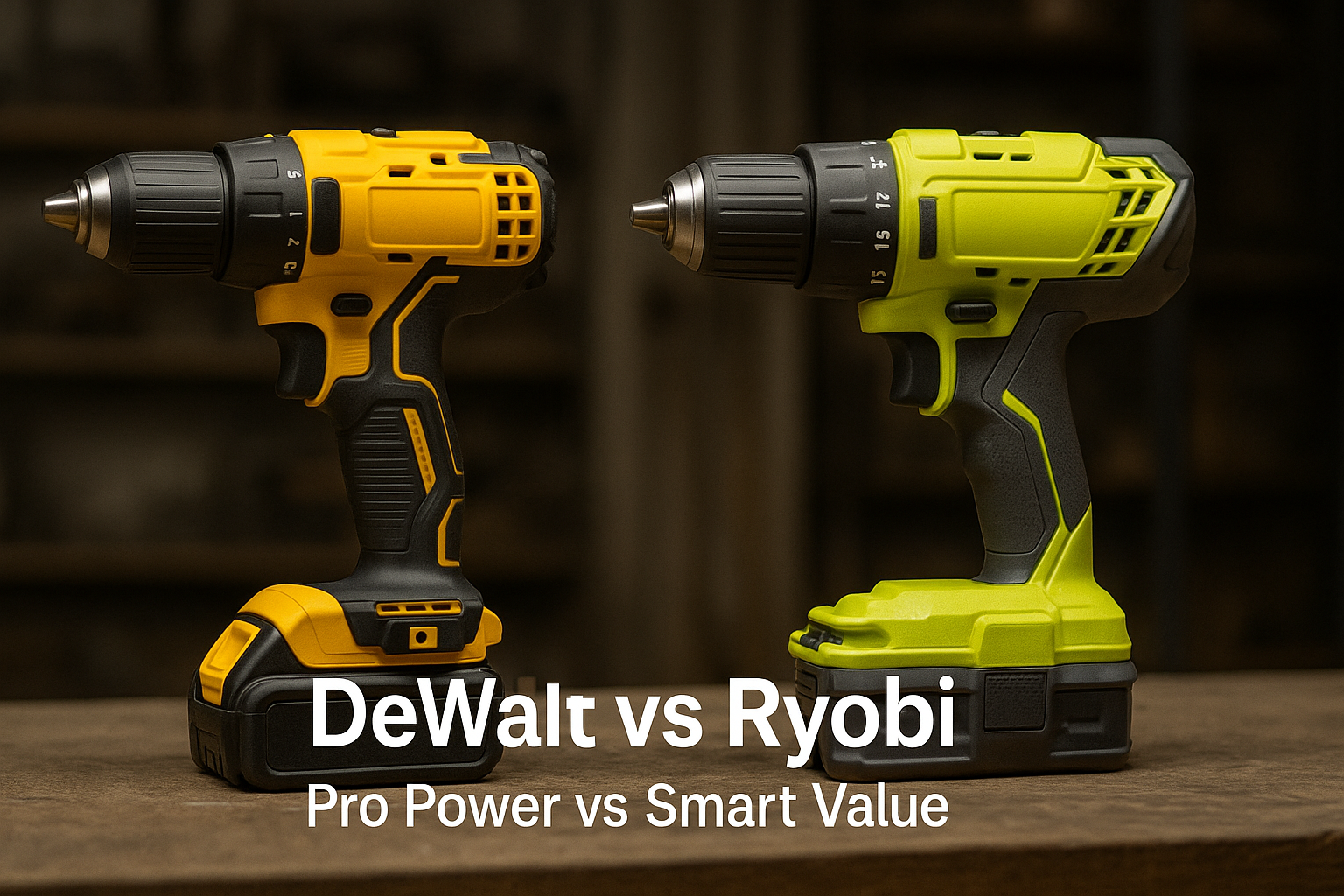For years, DeWalt and Ryobi have represented two sides of the same workshop. One built for professionals who demand endurance, the other for homeowners and hobbyists who value affordability.
But as battery platforms, brushless motors, and digital controls continue to advance, the line between “budget” and “pro-grade” tools is becoming harder to define.
So, in 2025, can Ryobi’s evolving lineup genuinely stand against DeWalt’s industrial reputation?
Power and Performance
DeWalt has long been associated with heavy-duty consistency. Its 20V MAX and FlexVolt systems deliver sustained power across a range of tools, making them a job-site staple. Ryobi’s ONE+ HP series, however, has made major strides with compact brushless motors and high-output cells that deliver surprising torque for their price.
According to performance tests similar to those discussed in DeWalt vs Milwaukee: Which Power Tool Brand Delivers the Best Value in 2025?, the real difference now lies in endurance rather than power peaks. DeWalt still holds the edge in sustained output under continuous load, while Ryobi provides strong bursts ideal for short, precise tasks.
Battery Systems and Compatibility
Cordless innovation has become the great equalizer.
DeWalt’s FlexVolt Advantage seamlessly switches between 20V and 60V output, extending runtime and tool versatility. Ryobi’s ONE+ System, though limited to 18V, maintains backward compatibility across more than 200 tools — an unmatched ecosystem for homeowners building a complete kit on a budget.
These advancements echo the battery evolution detailed in How Tabless Battery Technology Is Changing Power Tools Forever, proving that capacity and energy flow—not just voltage—define true performance.
Build Quality and Design Philosophy
DeWalt emphasizes industrial durability: metal gear housings, reinforced casings, and thermal-regulated electronics built for high-demand environments.
Ryobi counters with lightweight ergonomics, rubberized grips, and simplified housing that prioritizes comfort over endurance.
The result is two very different user experiences. DeWalt appeals to professionals who value precision and longevity. Ryobi attracts makers, renovators, and DIY enthusiasts who need reliable performance without over-engineering.
Smart Features and Connectivity
Both brands are gradually entering the smart-tool space.
DeWalt’s Tool Connect platform offers tracking, diagnostics, and customization through Bluetooth — part of the growing ecosystem described in Inside the Smart Workshop: Connected Tools That Think for You.
Ryobi has begun experimenting with sensor-based safety shutoffs and mobile app integration, but its system remains simpler and less data-driven.
For now, professionals who rely on digital management lean toward DeWalt, while occasional users appreciate Ryobi’s plug-and-play simplicity.
Price, Value, and Longevity
Ryobi’s appeal remains economic. Tool-for-tool, it delivers roughly 70 percent of DeWalt’s performance at about half the cost — a ratio that continues to attract first-time buyers.
DeWalt’s advantage lies in longevity. Its brushless motors, durable casings, and advanced cooling extend life cycles well beyond typical consumer expectations.
As discussed in Repair, Don’t Replace: The New Ethics of Modern Craftsmanship, longevity is itself a form of sustainability — and this is where DeWalt continues to justify its higher price point.
The Verdict
Ryobi has closed much of the performance gap, offering serious power for a fraction of the cost. For homeowners and light contractors, its ecosystem provides outstanding value.
DeWalt, however, still defines professional reliability. When continuous performance, durability, and smart diagnostics matter, it remains the benchmark.
The difference in 2025 isn’t about raw capability — it’s about use case.
Ryobi wins the affordability race; DeWalt still owns the job site.
